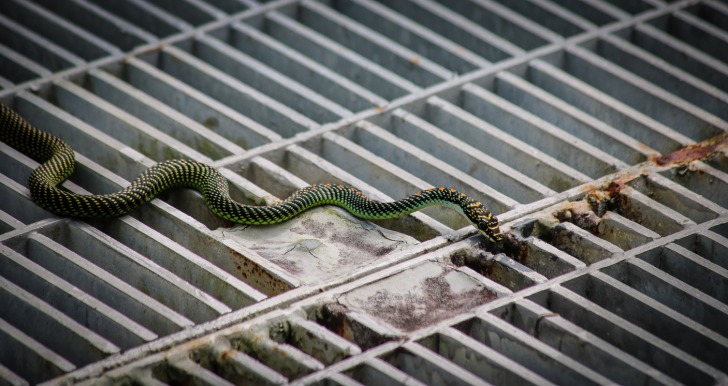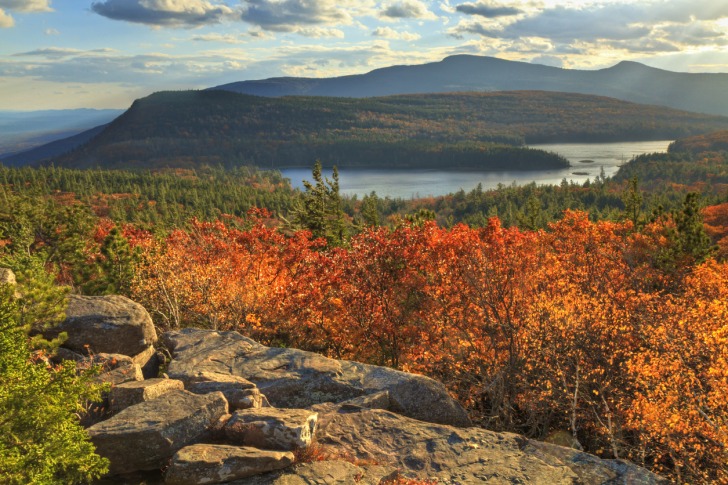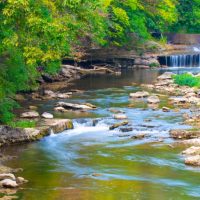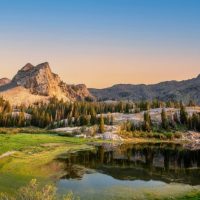New York is iconic.
New York City has the MET and the Empire State Building, while upstate New York features pristine landscapes.
Snakes may not be the first thing that comes to mind when you think of New York, but the Empire State is home to many species of snakes.

Contents
So… Are There Snakes in New York
Yes, New York has its fair share of snakes.
There are 18 species found in the state.
You’ll find all species in upstate New York near the Hudson Valley.
Surprisingly, about half of New York’s snakes also live in New York City.
Venomous snakes are fairly rare in New York, but three venomous species live in the state.
Snake Species in New York
Let’s take a look at some of the most common species in New York, and the snakes you should steer clear of.
Rattlesnakes
Rattlesnakes are well known in America and are responsible for more snake bite deaths than any other type of snake in the U.S.
They get their name from the rattle at the end of their tail.
When threatened, they shake their tail, which produces their signature rattle sound.
There are two species of rattlesnakes in New York, the timber rattlesnake and the Eastern Massasauga.
The timber rattler is considered “threatened” by the New York State Department.
It’s found in southeastern New York, excluding New York City and Long Island.
They’ve also been found in the northern and western parts of the state.
It’s fairly large and can grow to 6 feet long.
The Eastern Massasauga is smaller and is often referred to as the pygmy rattler.
It’s about half the size of the timber rattler, at 3 feet long.
It is “endangered”, and is only found in two areas today.
You can spot the smaller snake in the wetlands Northeast of Syracuse and West of Rochester.
Copperhead
Copperhead snakes are responsible for the most bites in the U.S.
They bite about twice as often as rattlesnakes.
They caused 2,287 bites in 2021 across the country.
They have a copper-colored head.
Their body is usually tan or brown, with hourglass-shaped bands down its body.
In New York, they are commonly found along the lower Hudson Valley and the Catskills.
Garter Snakes
There are three species of garter snakes found in New York.
They get their name from the stripes that run down their back, which resemble a garter.
The common garter snake is the most common snake found in the state.
It’s usually dark green with yellow stripes, but it can sport different colors.
Most are between 1 to 2 feet long, but they can reach 4 feet in length.
Garter snakes are harmless, and can be found in woodlands, grasslands, and suburban lawns.
Water Snakes
Water snakes are also very common in New York.
You’ll find them in near bodies of water, including creeks, rivers, wetlands, and lakes.
It’s typically dark brown or black, with lighter bands or splotches that go down its body.
Water snakes are not venomous, but they can be dangerous.
They have bacteria in their mouths that can cause complications or infection.
Swelling and pain at the bite site are common.
They are large, growing to nearly 4 feet long.
Their appearance and aggressive nature mean they are often confused with the water moccasin, which is highly venomous.
However, water moccasins are not found in New York.
Is it Safe to Go on a Trek in New York?
Generally, yes, you can safely explore New York’s wilderness.
Of course, there are hazards, and snakes are only one of them.
New York Snake Bites
New York has an average of 37 snake bites a year, and fatalities are very rare.
In the U.S., there are 7,000-8,000 venomous snake bites each year, and 5-10 fatalities.
There have been no fatalities from venomous snakes in the state in the last two decades.
Moose
Moose are the largest animal found in New York.
Bulls, or male moose, can be aggressive during the mating season.
Females, on the other hand, can be aggressive if they feel they are defending their babies.
Eurasian Boar
The Eurasian Boar is a non-native species.
Males have sharp tusks that they can use to cause injury.
New York wildlife officials are attempting to eradicate them, but they are still seen in upstate New York.
Black Bears
Black bears are not normally aggressive towards humans.
However, they do pack claws and a large body that can certainly do some damage.
There was one fatality due to a black bear in the state.
Severe Weather
Severe weather is likely the biggest danger you’ll face in the Empire State.
The state experiences about 7 heat waves each decade, which cause fatalities due to the high temperatures.
Winter is more concerning, with about 1,000 cold-related deaths each year in the U.S.
New York can get snowstorms, ice storms, and blizzards in addition to very cold temperatures.
New York also gets hurricanes, because it’s located on the Atlantic coast.
Severe thunderstorms can bring heavy rain, flooding, and lightning.

Interesting Snake Facts in New York
The largest snake in New York is the black rat snake, which can grow to 8 feet in length.
This snake is intimidating due to its size, but it’s harmless to humans.
It’s a constrictor, which means it wraps its body around its prey to suffocate it.
The milk snake was once thought to feed on cows in dairy barns.
Today, we know that milk snakes enjoy barns because they have plenty of their favorite food, rodents.
Milk snakes have a cream-colored body and bright red patches with black borders.
These brightly colored beauties are often mistaken for the coral snake.
It’s frequently mistaken for a copperhead or coral snake thanks to its bold colors.
It will move its tail when threatened, so it’s sometimes mistaken for a rattlesnake as well.
Unlike the snakes it imitates, the milk snake is harmless.
3 Safety Tips for Exploring Nature in New York
Before you start exploring the wilds of New York, there are a few safety tips you should know.
1. Don’t Get Close to Wild Animals
Wild animals are wild.
They are driven by their instincts, and won’t hesitate to attack if they feel threatened.
Nearly any wild animal can be dangerous if you get too close, so admire them from a safe distance.
Never try to feed or handle a wild animal.
2. Be Prepared for the Weather
New York weather can be unpredictable.
Before you head out, be sure that you are prepared for the current conditions and any potential changes.
In the summer, this means carrying extra water and sunscreen.
In the winter, bring plenty of warm clothing.
If bad weather is in the forecast, wait for safer conditions before exploring the area.
3. Let Someone Know Your Location
This is particularly important if you are exploring on your own.
Tell someone you trust where you are going, and when to expect you back.
If you aren’t back at that time, they should contact the local authorities.
Summary
New York does have a few species of venomous snakes, but they are uncommon.
However, some nonvenomous species can also pack a nasty bite, so you should be aware of your surroundings and avoid provoking any snakes you may find.
New York Safety Overview
READ THE FULL REPORT: New York Safety Review
Safety Index:
- OVERALL RISK: LOW
- TRANSPORT & TAXIS RISK: LOW
- PICKPOCKETS RISK: LOW
- NATURAL DISASTERS RISK: MEDIUM
- MUGGING RISK: LOW
- TERRORISM RISK: LOW
- SCAMS RISK: MEDIUM
- WOMEN TRAVELERS RISK: LOW
Frequently Asked Questions
Does New York have a lot of snakes?
New York has fewer species of snakes than most U.S. states because of its colder climate.
How can I identify a venomous snake in New York?
All three species of venomous snakes in New York are pit vipers.
This means they have triangular-shaped heads and pits, or small holes, on each side of their head.
What should I do if I see a snake?
In most cases, it’s best to slowly move away from the snake.
Even if a snake is not venomous, it’s best to leave it alone.











